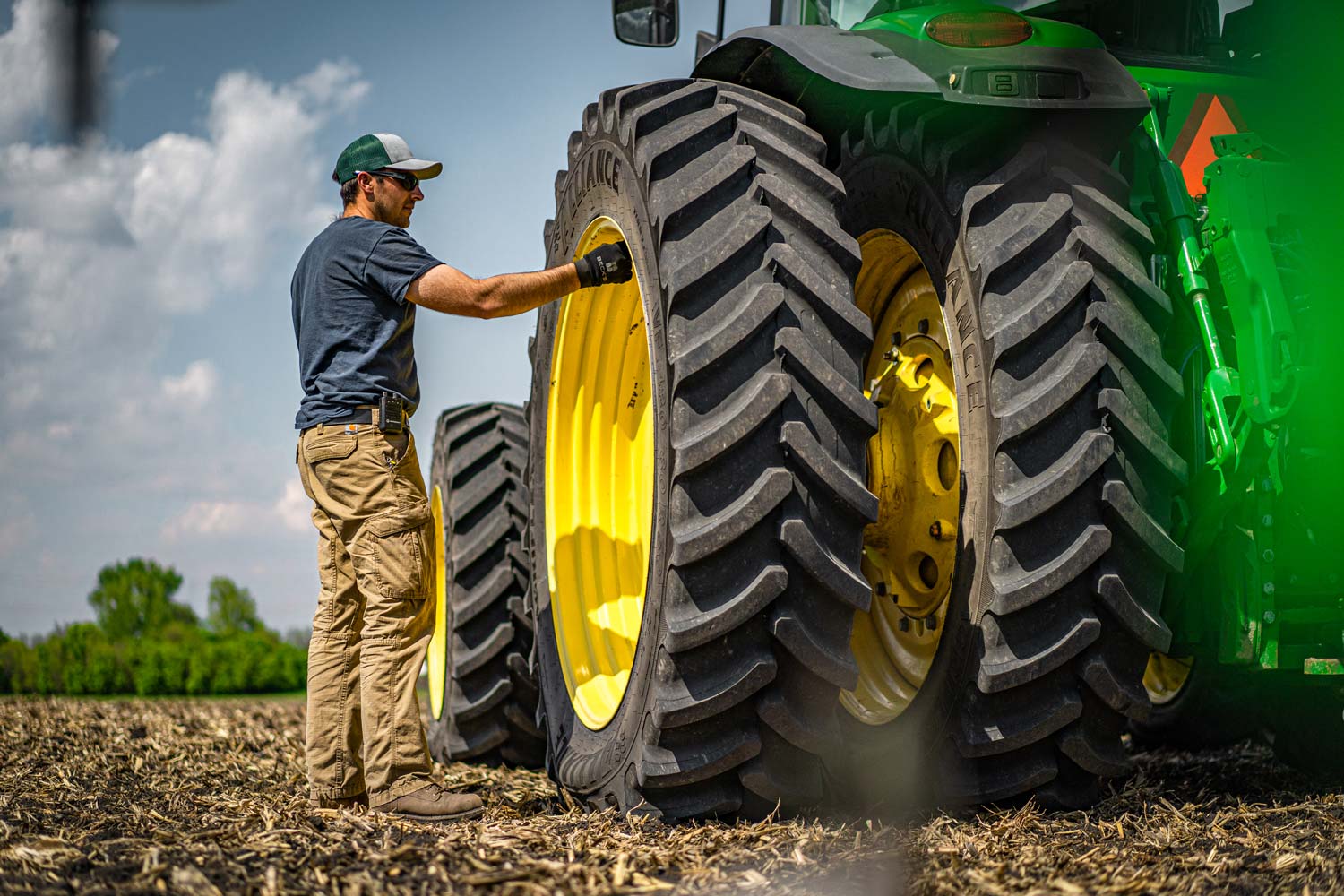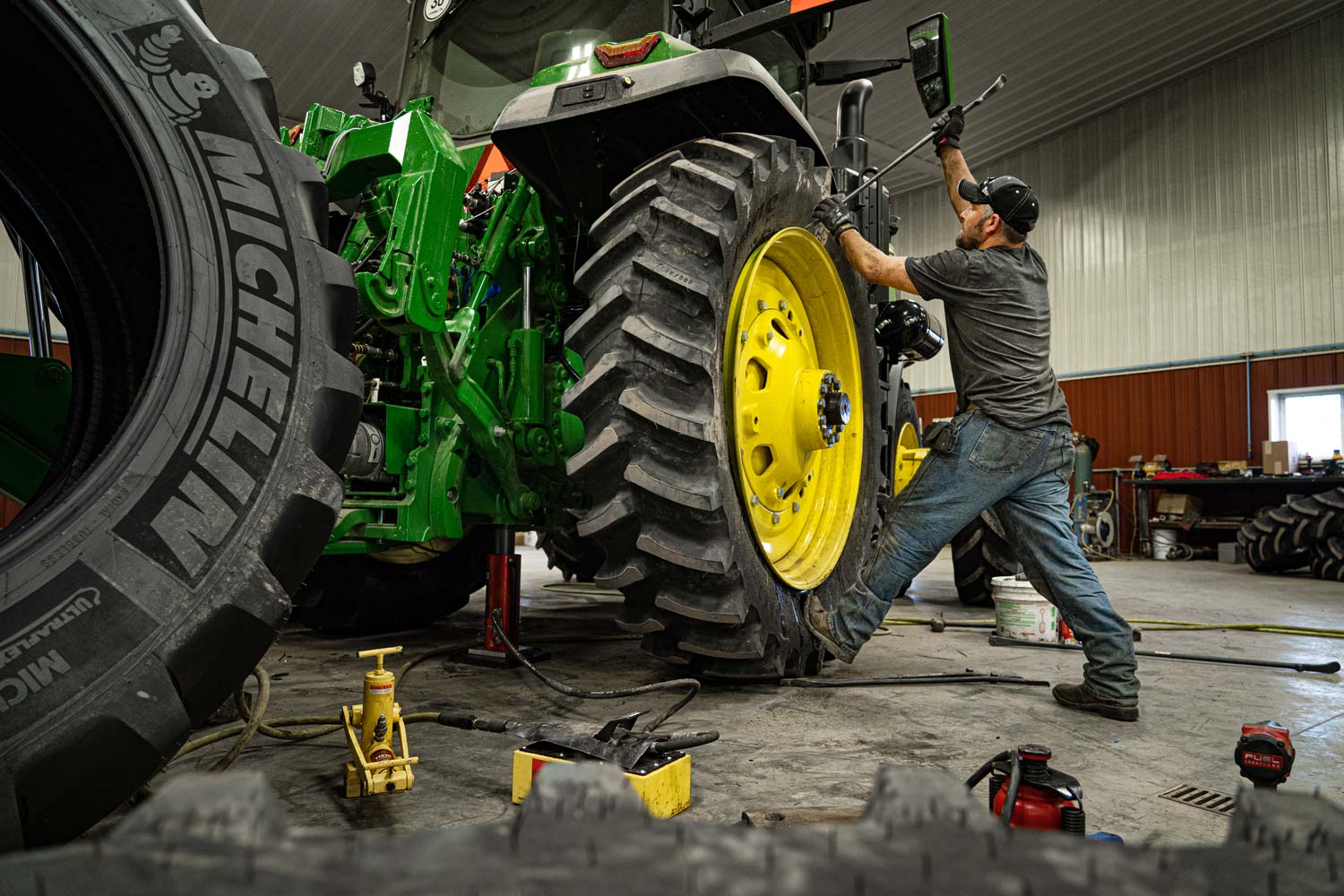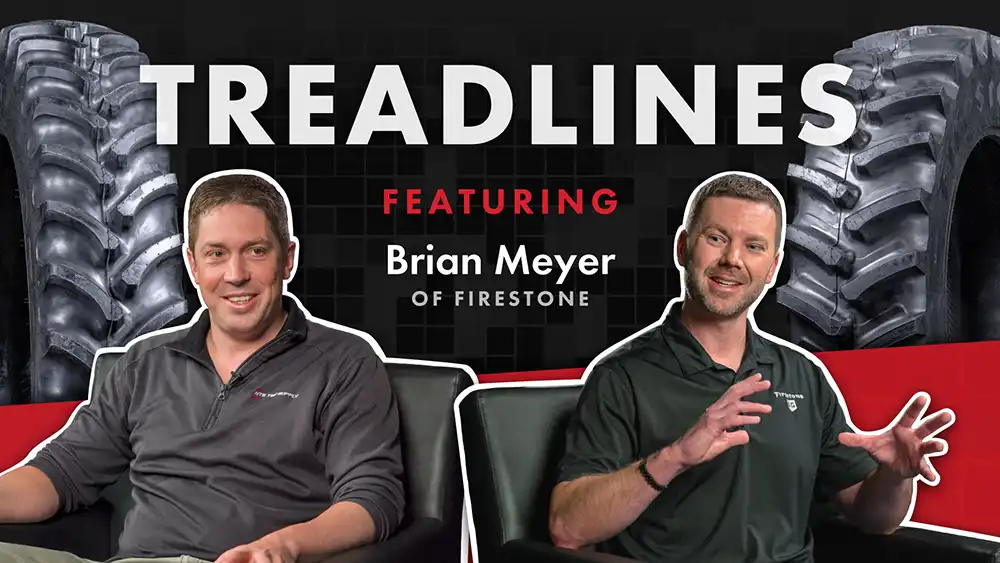Every time you roll across your fields you leave an impact. Are we talking about compaction? Sure, that’s one impact you leave with your tires. But we’re also talking about the overall impact on your farm. Your profitability. “Input” is a familiar term to anyone in agriculture—seed, fertilizer, fuel, you name it. But have you ever thought to add tires to the inputs list? You should, because mounting the right rubber on your machines is one way to boost your farm’s profitability.

What Does Every Agronomy Decision Have in Common?
Farmers are faced with a yearly barrage of agronomy decisions, which include everything from crop genetics to GPS guidance software updates. Will that new corn variety give you more bushels per acre? Will that guidance system upgrade help you fine-tune your spraying operations? Whatever anyone is selling you, the goal is always the same: Increase your profit margin. Sure, that new seed variety might be more expensive, but it’s supposed to top last year’s yields so you’ll actually see a net increase in productivity.
What about tires? Do you lump them in with expendable items such as oil filters and hydraulic hoses? That could be a huge mistake and cost your farm thousands of dollars in lost productivity. Because the right farm tires will drive profitability for your farm. Or as we like to say at NTS Tire Supply—Drive Your Farm Forward™.
How Neglecting Your Tires Can Cost Your Farm
What can happen if you treat your tires like expendables and not part of your overall agronomy program? There are several ways the wrong tires or poorly maintained tires can affect your bottom line:
Lower Yields
Soil compaction is stealing your profits—even if you haven’t noticed it in your fields. Research has shown that soil compaction can slash yields by up to 15% in a single year. It can also slash your yields for over a decade—even with tillage and no additional compaction.

How? Compaction destroys healthy soil structure, which makes it harder for your crop to grow. The end result, as the chart above shows, is lower yields. There have been numerous compaction studies over the years, and all of them have shown that compaction will deliver a hit to your bottom line to some degree.
Learn More: Recent Study Estimates that Soil Compaction is Costing Farmers Millions
Lower Fuel Economy
Most farmers would definitely recognize fuel as an important input—it’s one of a farm’s largest expenses. Because your tires are your machines’ only link to the ground, they play a big part in your machines' efficiency (or inefficiency). Tires that are overinflated, worn out, or not sized properly for the amount of weight they need to support will inflate your fuel bill.
Read More: Use these 5 Strategies to Improve Your Tractor’s Fuel Economy
Odd & Fast Tire Wear
Unlike other expendables such as oil and air filters, the way you treat your tires can have a big impact on how long they continue to drive your business forward. For example, running your tires at air pressures that are too high for the application at hand can result in early wear in the tires’ centers. Odd wear affects your bottom line in a few ways:
- You will need to replace your tires sooner, increasing the money you spend on tires.
- You will burn more fuel and spend more time in the field. Worn tires don’t give you the “bite” they should, which leads to increased wheel slip and slower working speeds.
- You will probably experience poor ride quality as well. This might not seem like a big deal until you think about all the hours you spend in the field and on the road.
How to Drive Your Farm’s Profitability on Your Tires
So you’ve decided that tires are more than big, round, and rubber parts that wear out and need to be replaced: You want them to Drive Your Farm Forward™. Here are a few tire strategies that can boost your bottom line.

Set Your Tires to the Optimal Pressure for Each Application
First, please use a tire pressure gauge. Always adjust your tire pressure for the application at hand—not necessarily the number printed on a tire’s sidewall. To determine the proper inflation pressure for your tires, you need to know the axle load, speed of operation, and number of tires (singles, duals, triples) per axle. Here are a few key points to keep in mind as you’re determining the right air pressure:
- A tire’s load carrying capacity decreases as speed increases. For example, a tire traveling at 25 mph may need to be inflated to 15 PSI while that same tire traveling at 6 mph may only need to be inflated to 7 PSI.
- Always use the recommended inflation pressure given by the tire manufacturer. So, if your tractor is wearing Firestones, make sure to consult Firestone’s tire load and inflation table or its online tire inflation calculator.
- As your tractor’s tire setup changes (adding/removing triples, etc.) with the seasons, you need to adjust your tire pressures to match.
- Check your pressures daily to be sure they’re on target. If the weather turns colder, your tires will lose some air, and it’s not good to be underinflated either. Or, you might catch a major problem—a slow valve stem leak that’s completely deflated a tire in a dual setup, for example. Fail to catch this and you can ruin a tire that will cost thousands of dollars to replace.
Find Your PSI: Links to manufacturer online tire pressure calculators.
If you have questions about determining the correct tire inflation pressures for your equipment, contact NTS Tire Supply to talk with a farm tire expert.
Aim to Work at 15 PSI or Lower in the Field
In order to slow yield losses from compaction, it’s important for your equipment’s tires to be inflated to 15 psi or lower in the field. At pressures higher than 15 psi, the stress on your soil begins to accumulate faster, and you’re more likely to see compaction-related problems—drainage issues, nitrogen loss, and ultimately yield losses at harvest time. In fact, NTS Tire Supply recently partnered with AgRevival Research to explore the connection between yield and different tire pressures at planting.
New NTS Tire Supply PSI study: First-year data suggest lower tire psi at planting can bring yield increases.

Mount the Best Tires for the Job at Hand
When’s the best time for a tire upgrade? When the upgrade will improve your machine’s performance and deliver a solid return on your investment. For example, are you still running bias-ply tires on large tractors and implements? Then you’re overdue for an upgrade to radials. Bias tires are fine for chore tractors and other utility vehicles around the farm, but radials are necessary when you want longer tread life, less compaction, and better traction.
Remember our goal to keep tires at or below 15 psi in the field? This means you might need to upgrade from standard radials to IF- or VF-rated radials. IF/VF radials put more tire—a larger footprint—on the ground thanks to lower air pressures and more sidewall flex. An IF (increased flexion) radial can carry the same load as a standard radial at 20% less pressure. A VF (very increased flexion) radial can carry the same load as a standard radial at 40% less pressure. Or, you can increase their maximum loads by 20% or 40% above a standard radial’s limits.

The larger, more uniform footprints of an IF/VF radial tire model can roll several benefits your way:
- Faster fieldwork and higher fuel efficiency due to less wheel slip. IF/VF tires will move you farther forward with each engine revolution.
- A more comfortable ride. The advanced sidewalls of these radials and lower inflation pressures help them act as large shock absorbers.
- Higher yields from less compaction.
You also need to mount the correct size tires on every machine. At NTS, we perform hundreds of changeovers every year, where we help farmers optimize their tire setups to accomplish their goals. This often involves swapping narrow duals for larger tires. However, it is possible to “over-tire” a machine, or mount tires that are too large. If you want help choosing the optimal tire setup for a particular machine, contact NTS Tire Supply and talk with a farm tire expert.
Take Complete Control with a Central Tire Inflation System on Your Tractor
Here’s a problem for you: We’ve told you that working at the lowest safe pressure in the field (15 psi or lower) will help safeguard your soil. However, your machines’ tires need to perform on the road too. At high speeds and under heavy loads—think about a tractor pulling a center-fill planter from field to field, for example—you need your tires inflated close to their maximum PSI. Anything less, and you’ll wear them really fast, deal with mushy handling, and burn extra fuel from the increased rolling resistance.
Pick a pressure somewhere between the ideal field and road pressures, and your machine isn’t optimized for anything.


So what’s the solution? A central tire inflation system. According to Michelin, the owner of PTG Tire Inflation Systems, a central tire inflation system can deliver:

Tires Can Drive Your Farm’s Profitability
At NTS Tire Supply, we’re constantly helping farmers improve their equipment’s performance with the right tires. Sound sort of vague? That’s intentional, because the “right tire” depends on many different factors. After all, every farm and every farmer’s goals are unique. Our tire experts are ready to assist you in reaching yours. Do you want to fight back against deep soil compaction and yield loss? Want more pulling performance from your big 4WD? Want to know if an AgriBrink or PTG central tire inflation system will pay dividends for your farm? We can handle it all. NTS Tire is here to help you Drive Your Farm Forward.

.png)
.jpg)



















